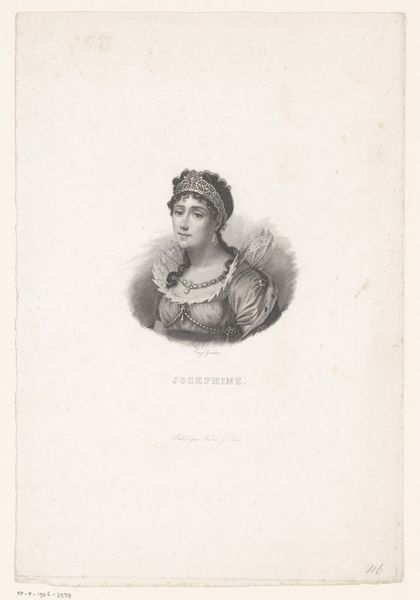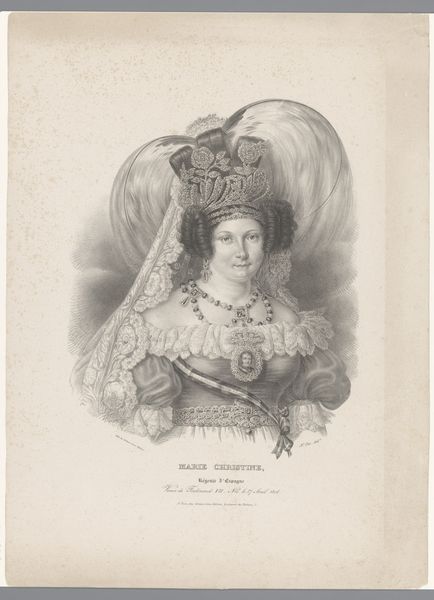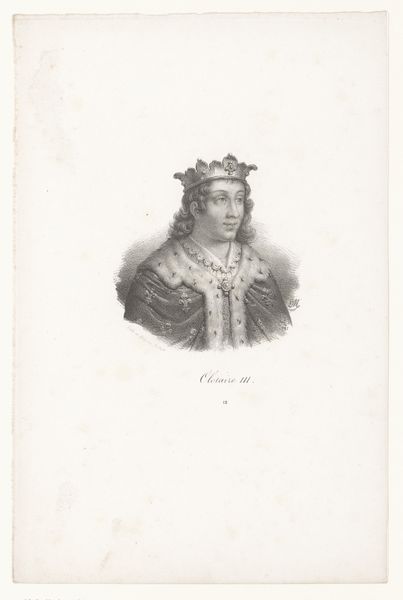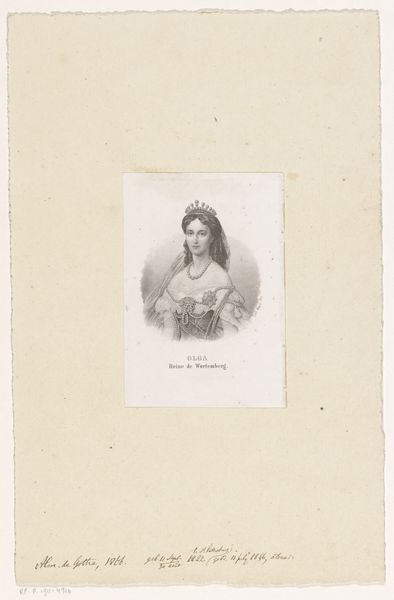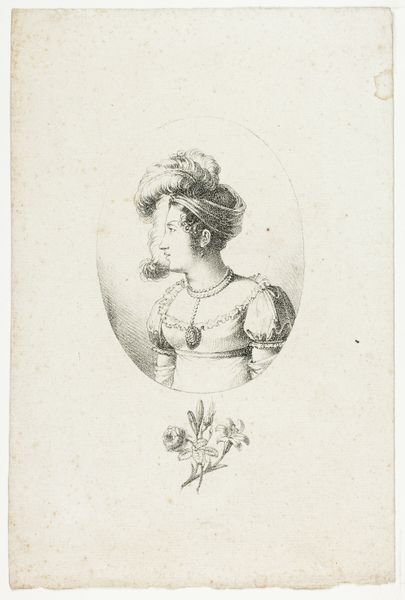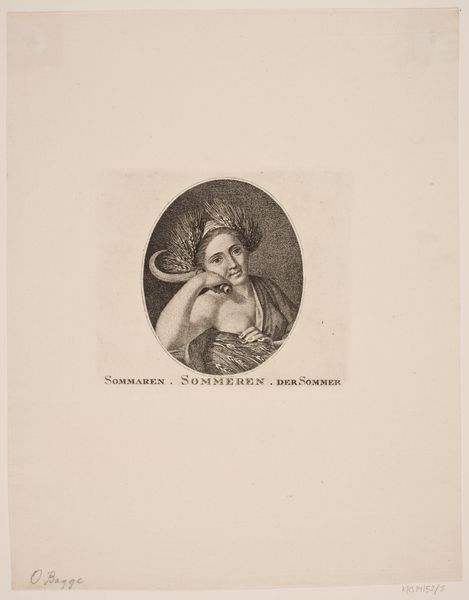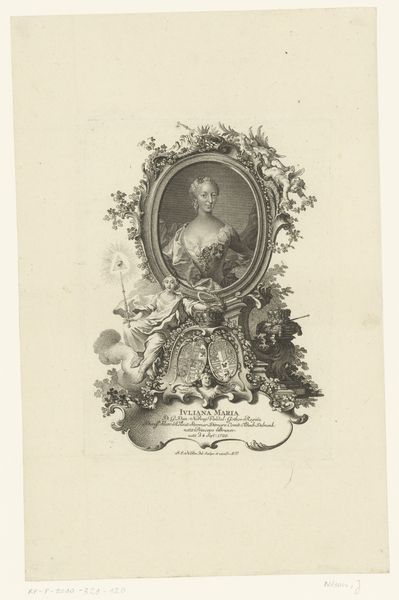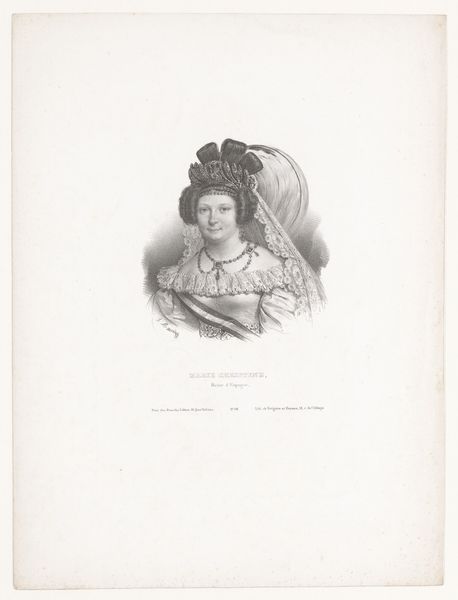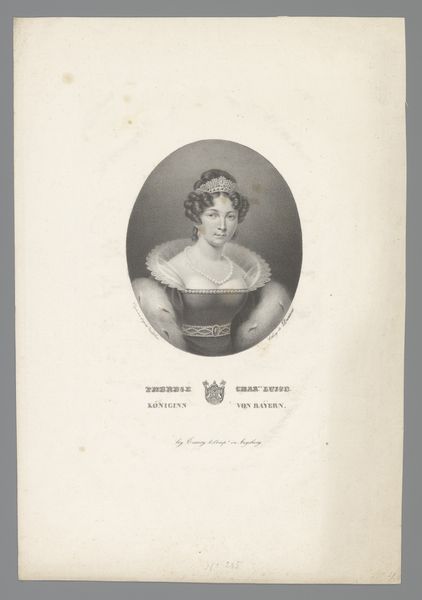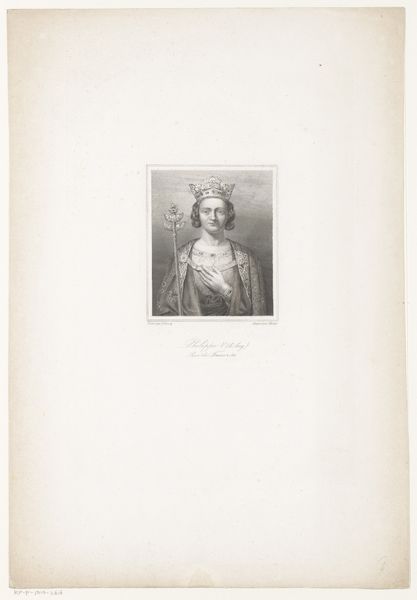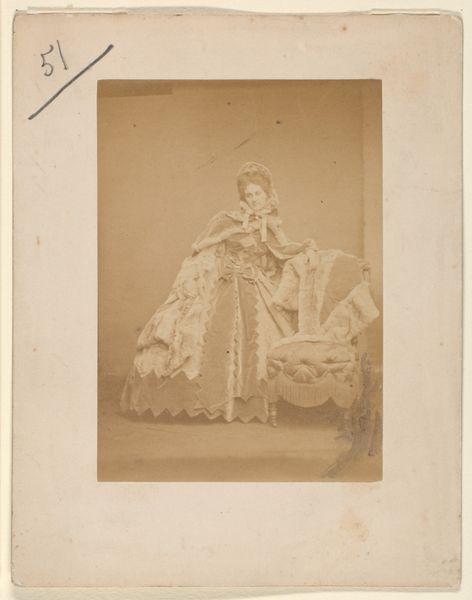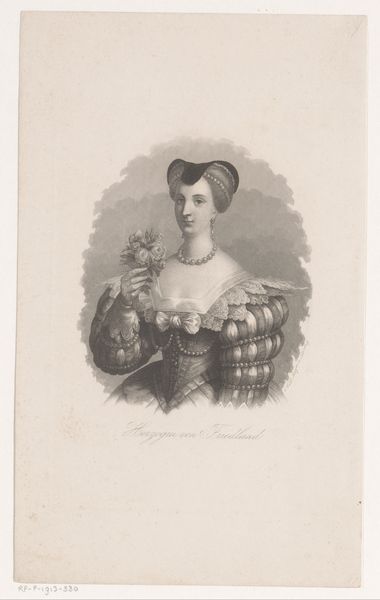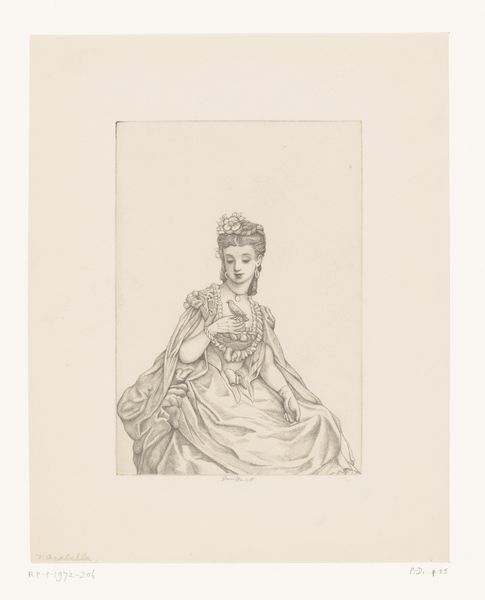
Portret van Hortense Eugénie de Beauharnais, koningin van Holland c. 1825 - 1860
0:00
0:00
engraving
#
portrait
#
romanticism
#
history-painting
#
engraving
Dimensions: height 275 mm, width 171 mm
Copyright: Rijks Museum: Open Domain
This portrait of Hortense Eugénie de Beauharnais, Queen of Holland, was made anonymously with a technique called lithography. Lithography uses the chemical repulsion of oil and water. The artist draws an image with a greasy crayon onto a flat stone or metal plate. Water is then applied, which adheres only to the areas not covered in grease. When oily ink is rolled over the surface, it sticks to the drawn image but is repelled by the wet areas. The image is then transferred to paper. Unlike engraving, which requires laborious carving, lithography allows for a more direct translation of the artist’s hand. Here, you can see the delicate tonal gradations and fine lines achieved through this process. The proliferation of prints like this one reflects the rise of a consumer culture, where images of the elite could be widely disseminated, fueling desires for status and possessions. Considering the materials and processes used in its creation helps us to understand the social and cultural significance of this artwork. It bridges the gap between the fine arts and everyday life.
Comments
No comments
Be the first to comment and join the conversation on the ultimate creative platform.
